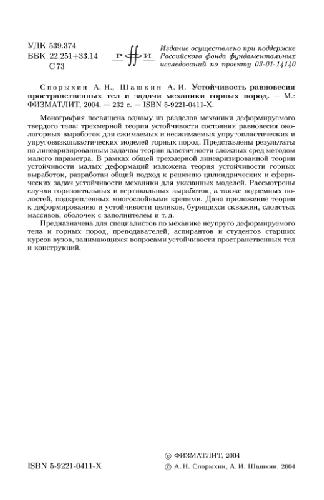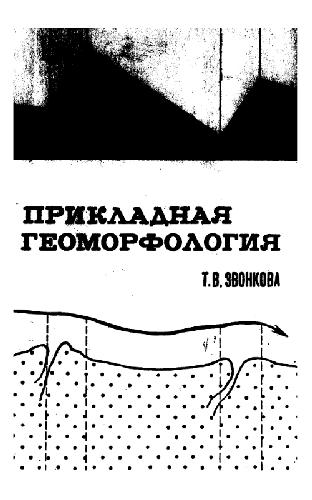V. B. H. (Gini) Ketelaar1402094272, 9781402094279, 9781402094286
It provides a review of existing subsidence estimation methodologies using geodetic measurements, explains Persistent Scatterer InSAR (PSI), and proposes a new method for reliability assessment: multi-track datum connection. The presented methodologies are demonstrated for the entire northern part of the Netherlands and a part of Germany (covering ~15.000 km2), using multi-track SAR observations from ESA’s ERS and Envisat satellites.
The capability of PSI for wide-scale monitoring of subsidence rates of several millimeters per year in a rural area (which implies a low PS density) is shown. Additionally, methodologies for a better discrimination of the deformation signal of interest, subsidence due to hydrocarbon production, are assessed.
Essential for operational use, the performance of PSI with respect to the leveling technique is quantified. It is shown that the high spatial and temporal observation density of PSI moreover contributes to the understanding of subsurface processes. For example, subsidence due to gas extraction and subsequent uplift due to underground gas storage is clearly detected.
Table of contents :
Contents……Page 9
Summary……Page 13
Nomenclature……Page 15
1.1 Background……Page 17
1.2 Research Objectives……Page 18
1.3 Outline……Page 21
2.1.1 Hydrocarbon Reservoirs……Page 22
2.1.3 Reservoir Properties……Page 24
2.1.4 Subsidence Prediction Methodologies……Page 28
2.2.1 Leveling Campaigns……Page 30
2.2.2 Legal Guidelines……Page 32
2.3.1 Adjustment and Testing Procedure……Page 33
2.3.2 Point-wise Multi-epoch Deformation Analysis……Page 35
2.3.3 Continuous Spatio-temporal Deformation Analysis……Page 36
2.3.4 Deformation Analysis of Subsidence Due to Gas Extraction……Page 39
2.4 Conclusions……Page 40
3.1 Interferometric Processing……Page 42
3.1.1 Oversampling……Page 44
3.1.2 Coregistration……Page 45
3.2 Persistent Scatterer Selection……Page 47
3.2.1 Identification Methods of PS Candidates……Page 48
3.2.2 Pseudo-calibration……Page 50
3.3.1 Master Selection……Page 53
3.3.2 Double-difference Observations……Page 55
3.4.1 Functional Model……Page 56
3.4.2 Integer Least-Squares Estimation……Page 58
3.4.3 Stochastic Model……Page 61
3.4.4 DePSI Estimation Strategy……Page 63
3.5 Conclusions……Page 64
4.1 Precision and Reliability in PSI……Page 65
4.2 Influence of Imperfections in the Functional Model……Page 66
4.2.1 Sub-pixel Position……Page 67
4.2.2 Sidelobe Observations……Page 68
4.2.3 Orbital Inaccuracies……Page 70
4.2.4 Phase Unwrapping in the Presence of Atmospheric Disturbances……Page 71
4.3 Imperfections in the Stochastic Model……Page 73
4.3.2 Separation of Unmodeled Deformation and Atmospheric Signal……Page 74
4.3.3 Possibilities and Limitations of Variance Component Estimation……Page 76
4.3.4 Dilution of Precision……Page 78
4.4 Measurement Precision……Page 81
4.4.1 Leveling Precision……Page 82
4.4.2 InSAR A-priori Measurement Precision……Page 83
4.4.3 InSAR and Leveling Double-Difference Displacements……Page 85
4.4.4 Validation of the Stochastic Model……Page 87
4.4.5 InSAR A-posteriori Precision……Page 88
4.5 Idealization Precision for Deformation Monitoring……Page 90
4.5.1 Deformation Regimes……Page 91
4.5.2 PS Characterization……Page 92
4.5.3 The Use of A-priori Knowledge on the Deformation Signal……Page 100
4.6 Conclusions……Page 106
5. Multi-track PSI……Page 108
5.1 Single-Track Datum Connection……Page 109
5.2.1 Unified Radar Datum……Page 111
5.2.2 Connection of PSI Estimates……Page 117
5.2.3 Spatial Trends……Page 122
5.3.1 System of Equations……Page 123
5.4 Conclusions……Page 124
6.1.1 Data Coverage and Master Selection……Page 125
6.1.2 Generation of Interferograms……Page 130
6.1.3 DePSI……Page 132
6.2.1 ERS Deformation Estimates……Page 136
6.2.2 Envisat Deformation Estimates……Page 140
6.3 Quality Control……Page 141
6.3.1 Precision of PSI Estimates……Page 142
6.3.2 Unmodeled Residual Components……Page 145
6.4.1 Datum Connection……Page 153
6.4.2 Displacement Vector Decomposition……Page 157
6.5 Idealization Precision for Deformation Monitoring……Page 159
6.5.1 Identification of Deformation Regimes……Page 160
6.5.2 Shallow and Deep Sub surface Movements in Groningen……Page 165
6.5.3 PS Characterization……Page 167
6.5.4 On the Use of A-priori Knowledge on the Deformation Signal……Page 174
6.6 Conclusions……Page 178
7.1.1 PSI and Leveling Deformation Estimates……Page 179
7.1.2 Setup for the Evaluation of Spatio-Temporal Sampling……Page 181
7.1.3 Temporal Sampling……Page 182
7.1.4 Spatial Sampling……Page 185
7.2 Comparison of PSI and Leveling Deformation Estimates……Page 191
7.2.1 Parameterization of the Agreement between PSI and Leveling……Page 193
7.2.2 PSI and Leveling Displacement Rates……Page 196
7.2.3 PSI and Leveling Displacements……Page 201
7.3 The Integration of Geodetic Measurement Techniques……Page 205
7.3.1 Mathematical Model……Page 206
7.3.2 The Integration of Leveling and PSI……Page 207
7.4 Conclusions……Page 209
8.1 Precision and Reliability……Page 211
8.2 Separation of Deformation Regimes……Page 213
8.3.1 Temporal Behavior of Subsidence Due to Gas Extraction……Page 215
8.4 Future Subsidence Monitoring……Page 219
9.1 Conclusions……Page 223
9.1.2 Precision……Page 224
9.1.3 Reliability……Page 225
9.1.4 Deformation Regimes……Page 226
9.1.6 Hydrocarbon Reservoir Behavior……Page 227
9.2 Contributions……Page 228
9.3 Recommendations……Page 229
Appendix 1: Location of Research Areas……Page 231
A2.1 PSI (Track 380,487) and Leveling (Free Network Adjustments)……Page 233
A2.2 PSI (Track 380,487) and Leveling (SuMo Analysis)……Page 235
Bibliography……Page 242
About the Author……Page 249
L……Page 250
T……Page 251
W……Page 252







Reviews
There are no reviews yet.